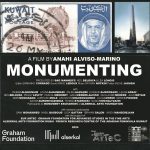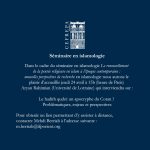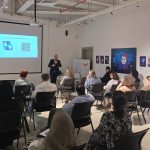Teaching During the Pandemic
- admcef22
- January 30, 2023

Kuwait, 19/10/2020
“I’ll see you after the holidays. Prepare for your midterm exam and don’t have too much fun.” These were the last words I said in a physical classroom. February 20th, 2020. My class, all thirty-five students, smiled back at me and nodded, ignoring the midterm remark.
I hadn’t realized then that the universe would ignore my midterm examination date. March 1st. By then, Kuwait had recorded coronavirus cases and was trying to manage the pandemic with various ways. We had couple of weeks of “public holiday” and I waited for more news before contacting my students. The ambiguity and vagueness were difficult to deal with. I didn’t know when we would be back to campus. I didn’t know if there would be a midterm. I didn’t know how to answer the overwhelming number of emails I received from my students, mostly in a state of panic, asking me what would happen and how their grades would be managed. For the first time, I had no answers, and I felt helpless as I stared at the emails, unable to guide them or offer a plan of action.
As a professor invested in my students’, I really care about their mental health. I decided to send each class a voice note so that they would hear my reassuring voice and help them feel less disconnected from campus as the administration navigated the new terrain of online teaching. As faculty members, we were still being trained by the university’s administration as most of us had no previous experience in online teaching or virtual platforms. So what I tried to tell my students was the following “Stay calm, even though it’s tarrying right now and we don’t know where we are headed. Most importantly, stay with your loved ones. Stay indoors, stay safe, and try to take this time as an oppurtonity to connect with people around you. Or, if you can’t do that, connect with yourself. Read the books you haven’t read, watch the movies you want to watch. And remember, we are a community. I am here for you even if I don’t see you in class.”
I received many emails after that voice note and most of them were grateful that they heard my voice instead of receiving a written email. By then, many of them were missing their friends, university life, and the atmosphere of normalcy. Isolation is real. The effect of staying indoors, away from society, away from university life is tremendous. Immeasurable.
By April we had started our online learning and were continuing the semester. We picked up where we left off, amidst all the panic and anxieties, shared by faculty and students. I began to apply a new technique in my classes, a mental health check at the beginning of every class. How are you feeling ? What did you do for yourself this week ? How are you coping ? These were some of the questions posed and my students began to feel more comfortable answering them as I shared my own fears and vulnerabilities. I told them that online learning was completely foreign to me and that I would need their help to navigate these woods. I would need to see them to feel safer – that I was not speaking into the dark abyss, a screen that would only mirror my face. I wanted the virtual class to feel real for us. We were holding on to a sense of community and I wanted to ease the isolation imposed by social distancing and the pandemic’s devastating effects.
The semester finished, and I went on to a new semester, a short story writing class that I had been excited about teaching. I changed my syllabus to reflect the new state of the world we were living in. I began considering the traumas incurred by the pandemic and previous plagues and world wars. I began to look at how writing can be therapeutic in a very real sense and how to apply that in class. One of the writing prompts I assigned was “Imagine Covid-19 is a person. Build his/her character and write a short story about this protagonist/antagonist.” The student responses were brilliant. Covid-19 was a child, Covid-19 was a villain, Covid-19 was a victim, Covid-19 was a robot manufactured to kill humanity, and so many other interpretations that left me overwhelmed by the sheer brilliance of my students’ imagination. They were making meaning of the loss, the ambiguity, the depressing state that the world was in. We would share their writing together and discuss ways to cope with the pandemic.
In my other classes, I still incorporated poetry, previous histories of plagues, societies’ coping strategies and focus on survival. Mental health was a priority that we discussed in class and I kept reminding them that we were all in this together. I needed to remind myself, too. I miss my physical classroom, the packed hallways of our beautiful campus, my office and its open-door policy, students rushing past me, late to class, my colleagues’ warm greetings, and the entire atmosphere of university life. University life is a vibrant life, a place we all get together for the same purpose : education. We offer different services and help students through an environment that fosters growth and creativity.
I am learning to do my part as an educator teaching during this pandemic. We have never been here before. But my virtual classroom is a safe space, a space for healing, growth, inspiration, and learning about different worlds. Most importantly, I am trying to make peace with not knowing where we will go from here. Together, we are on the same ship, and we hope to reach the shore safely. For now, my role is to make this journey feel safer and allow my students the hope that they will succeed in continuing their education.






